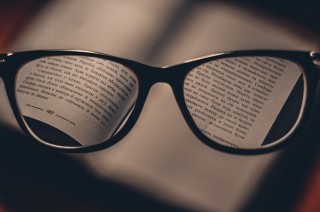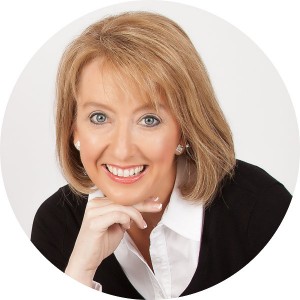Squinting into the future
Yesterday I chaperoned my parents, who are now in their 70s and 80s, to an eye doctor’s appointment. My dad is scheduled for cataract surgery next month, so he needed to have some pre-operative tests done in advance.
As a young doctor sat in front of the three of us, I thought about how “full circle” we’ve come. My parents used to take me to the doctor and sort through my childhood ailments, and now I’m the one asking the doctor questions about dad’s upcoming procedure.
While holding an oversized plastic model of the human eye, the doctor explained what happens inside the eye as we age. “See this lens right here?” he said, motioning to my dad who was only pretending to pay attention. “This lens is crystal clear when we’re in our 20s and 30s. And then as we age, usually sometime in our 40s, the lens becomes more inflexible and brittle, causing a condition called presbyopia.” (For the record, presbyopia is just a fancy medical way of saying “You can’t read the menu anymore.”)
I wanted to interrupt the young doctor’s explanation and tell him exactly when “presbyopia” shows up uninvited. In my experience, it happens at age 45. That’s when it happened to my husband, Tom, who is five years older than me, and that’s when it happened to me. And here’s something eye doctors don’t always tell you. This change in vision can happen so suddenly it’s alarming. Five years ago, Tom’s vision changed so quickly that he worried he might have a brain tumor. Imagine his relief when the eye doctor told him it was only middle age.
Even though I’d already seen it happen to Tom, I was still genuinely shocked a few months ago when my own vision went wonky. The whole experience was like a game of “ding-dong-ditch.” My 45th birthday rang the doorbell and when I opened the door, my ability to focus on fine print had disappeared, leaving me squinting on the front steps.
It was a real kick in the middle-age shins, especially for someone who has been nearsighted all her life and is still popping contacts into her eyes first thing in the morning. But now contacts aren’t enough.
I’ve discovered a few workarounds, though. There is a “magnifying tool” on the iPhone that will allow you to aim your phone’s camera at fine print and enlarge it to your heart’s content. (You can Google how to do it.) Instead of squinting or holding the menu at a distance that makes it appear contagious, it looks like you’re checking an important email on your phone.
 I’ve also made peace with the necessity of having a set of “readers” in every room of the house as well as my purse. I’m on a mission to find the most stylish glasses so I can look like a fashion-conscious intellectual versus a blind old bat. I’m happy to report that there are plenty of cute readers on the market, and statistics say more than 120 million of us need them.
I’ve also made peace with the necessity of having a set of “readers” in every room of the house as well as my purse. I’m on a mission to find the most stylish glasses so I can look like a fashion-conscious intellectual versus a blind old bat. I’m happy to report that there are plenty of cute readers on the market, and statistics say more than 120 million of us need them.
But I’m mindful things could be worse. In fact, that’s exactly what the young doctor said as he continued his demonstration with the oversized eyeball. He slipped a cloudy plastic lens into the model of the eye and said, “As we get into our 70s and 80s, this lens becomes more and more cloudy which causes blurry vision we can’t correct with glasses or contacts. That’s what a cataract is, and that’s what we’re going to fix with this surgery.” Dad nodded his head in response to an explanation he only halfway heard.
Inside my mind, I imagined Father Time dressed up like a train conductor. He leaned out of the train door and called out, “This stop — reading glasses! Next stop – cataracts! All aboard!”
I suppose I should shut up and enjoy the ride as long as I can until my train pulls into Cataract Station. At least now, armed with my collection of super-cute glasses, I can read the book I brought along for the ride.
Gwen Rockwood is a mom to three great kids, wife to one cool guy, a newspaper columnist and co-owner of nwaMotherlode.com. You can read more of Gwen’s work by clicking here to visit The Rockwood Files.
